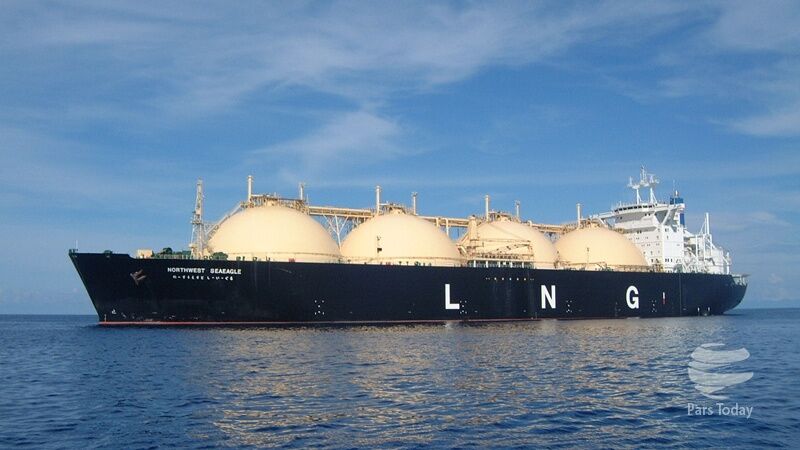To speed up the process, Europe has opted to seek out floating storage and regasification units (FSRUs) to rapidly build out its LNG import capacity.
Energy Intelligence calculates that from September 2022 to October 2023, FSRUs will provide Europe with an extra 36.44 million tonnes per annum (mtpa), or the equivalent of 49.55 bcm/y, of new LNG import capacity. Comparatively, it is still dwarfed by the EU’s total 155 bcm of Russian piped natural gas (PNG) imported in 2021 but will be compensated by an increase in other imported piped supplies, an increase in renewable capacity and a slash in gas demand.
Germany
Germany, Europe’s largest Russian gas importer, will install up to five FSRUs by end-2023, equivalent to around 16.2 mtpa, or 22 bcm/y, of new import capacity. This is expected to replace most — but not all — of the country’s Russian piped gas imports, which totaled around 46 bcm in 2021. Out of the five FSRUs obtained by Germany, two are set to begin operations in December — the 3.7 mtpa Brunsbuttel FSRU, operated by German utility RWE, and the 3.3 mtpa Lubmin FSRU, developed by Deutsche Regas.
The Brunsbuttel terminal will receive its commissioning cargo from Abu Dhabi National Oil Co. in late December after it signed an agreement with RWE last week. The parties also signed a memorandum of understanding (MOU) over a multiyear LNG supply deal into Germany. Meanwhile, French major TotalEnergies is set to provide the FSRU for the Lubmin terminal and is also expected to operate and supply the project.
Two more FSRUs are scheduled to come on line in the port of Wilhelmshaven in northwest Germany, most likely during 2023. German utility Uniper will operate the first one with 5.5 mtpa of capacity, which is expected to start operations by the end of this winter. Another 3.7 mtpa FSRU project planned to start up by October 2023 is being developed by Belgium-based Tree Energy Solutions (TES), utility E.
Italy, Europe’s second-largest importer of Russian PNG, is planning to add an extra 7.4 mtpa to the country’s existing LNG import capacity of 10.9 mtpa. Italian gas grid operator Snam purchased three FSRUs this year, two from Bermuda-based shipowner Golar and another from Norwegian shipowner BW LNG.
Elsewhere in Europe, the 5.9 mtpa Eemshaven import terminal in the Netherlands started operations in September and has already received eight LNG cargoes. The terminal is operated by Dutch grid operator Gasunie and consists of the Golar Igloo and the Eemshaven LNG FSRU vessels, which the company chartered for five years from Belgian shipowner Exmar. Eemshaven’s import capacity has been fully booked by Shell, Engie and Czech utility CEZ.
In France, Total is also going to install its 4 bcm/y Cape Anne FSRU at the port of Le Havre, expected to be operational in September 2023. France already has four operational LNG import terminals with a total import capacity of 25.6 mtpa, Europe’s third largest after Spain and the UK.
Baltics, Southeast Europe
In the Baltic Sea, Finland and Estonia are jointly developing an FSRU import terminal to supply both countries, planned to be installed at the port of Inkoo on Finland’s southern coast by this winter period. LNG imported here will be sent to either country through the bidirectional 2.6 bcm/y Balticconnector pipeline.
In southeastern Europe, a region which has been extremely dependent on Russian piped gas imports, Croatia is planning to double the regasification capacity of its Krk FSRU to 6.1 bcm/y. No timeline for the completion of the expansion has been provided. In Greece, the long-planned 4 mtpa Alexandroupolis FSRU is expected to start up by end-2023 in the northeast, complementing the country’s existing 5.1 mtpa Revithoussa import terminal, located near Athens.
Northern Europe
With the operation of three LNG import terminals in Germany in September to January and the addition of more of these terminals in the Mediterranean region in the next few months, the process of increasing the LNG import capacity of the Northwest European region will accelerate. In addition, Germany is able to import gas through the Emden and Dornum pipelines in Norway. At the same time, the gas import of this region from Russia has decreased.
The increase in the capacity of European gas conversion terminals has led to an increase in LNG imports and an increase in the level of storage tanks. However, the forecast of mild weather in the second half of December has somewhat reduced the amount of LNG imports. At the same time, it is expected that from the end of this week, the import process will pick up again due to the need of this region for LNG to supply consumption for the months of January and February.
With the increase in the number of import terminals, Europe is expected to absorb more of the transatlantic LNG cargoes to refill gas storage tanks for 2023. In April, gas injection into the European gas network from LNG terminals increased, and with the operation of a floating storage unit and conversion to floating gas in Germany, it is expected that in April 2023, the levels of gas storage tanks will be at a higher level than that of April 2022.
It should be noted that over recent months, gas consumption volume in the industrial sector in the European region has decreased due to soaring gas prices, and it is unknown whether the decrease in gas prices could be a stimulus for the return of part of the demand of this sector.
Iran Petroleum


Your Comment